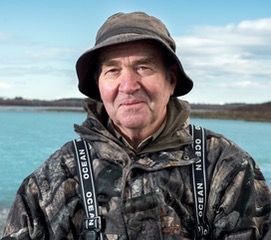Opinion by Dr Peter Trolove
Subtitle:-Laws Without Enforcement Are Meaningless

Last Thursday, (26 January), I attended a small meeting comprised of anglers and others concerned about the unhappy state of Canterbury’s Rakaia River’s recreational fisheries.
Most were invited members of a “Rakaia Group” who have regular meetings with Environment Canterbury (ECan); Bill Southward, a tireless Rakaia Huts identity, North Canterbury Fish and Game and New Zealand Salmon Anglers.
The purpose of the meeting was to hear a presentation chaired by Tim Davie, ECan’s Director of Science regarding the development of a new Water Budget Model for the Rakaia River. An ECan hydrologist gave the majority of the presentation with a senior consents manager contributing at the end.
The water budget model, of which we were given a brief overview, is ECan’s counter to a leaked “draft” report, the result of a 2 year detailed catchment wide investigation into the actual water inflows and abstraction from the Rakaia River. The senior hydrologist’s work has been accepted by an external hydrologist the NZFFA contacted as being of a high standard. The fault of the report was recording issues relating to possible non-compliance by consent holders, the lack of monitoring by ECan and the lack of real-time data.
It should be noted that the author of the report resigned in order to retain his professional integrity rather than make the changes requested by his ECan managers.
Open Mind
One of my roles as a veterinarian is to be an information broker so I have experience reviewing a range of information sources with an open though cynical mind.
While the power point slides were professionally formatted and had clear colour graphics, I was struck by the amount of averages, estimates, and assertions in the material presented.
Actual or estimate, the graphs showed how Central Plains Irrigation has been the most significant abstraction since 2018. The large Barrhill Chertsey Irrigation scheme, included in the same 2012 Lake Coleridge Project Hearing, was not discussed.
The hydrologist spoke of the complexities involved in building a water budget for the Rakaia River flows, and advised losses to groundwater between the NIWA measuring site in the Rakaia gorge and the river mouth are estimated to average 19 m3/sec +/- 17 m3/sec.
It would be more accurate to state that the groundwater losses are estimated to be in the range of 20 to 40 m3/sec, the figure used at the 2012 Lake Coleridge Project Hearing.
Accuracy of hydrological measurement at a transect was confirmed as +/- 8%.
Does this mean that the error of measuring individual braids within a transect should be summed?
Glova & Duncan (1985) stated it was not possible to measure a multi-braided transect with any degree of confidence.
It appears the purpose of the water budget model is to give Ecan an overarching understanding of how the multiple irrigation abstractions they have consented align with the residual river flows.
Minimal Monitoring
I found the presentation of the consents manager equally challenging.
Apparently ECan is not adequately resourced to monitor and enforce the consents they issue, although “the Rakaia catchment has been given priority”.
The consents team are concerned that recent standards in the Ministry for the Environment’s NPS FM and Mana Whenua mean consents coming up for renewal will no longer be compliant.
The issue for anglers as I see it, is that the Rakaia NWCO 1988, (amended 2013), attempts to protect the river’s values through a statutory flow regime.
We know the Rakaia River is in trouble and has experienced massive change since the 2013 WCO amendment.
We must have confidence that ECan is accurately recording all consented abstraction from the Rakaia River and connected groundwater, and that consent holders are complying with the conditions of their consents.
We need greater transparency to know this is the case.
We do not need another bloody model!
It was models of Stage III of the LCP that gained Trustpower a consent to take up to 70 m3/sec from the Harper and Wilberforce Rivers for storage and sale to CPW Ltd.
Work on Stage III never commenced and has since been shelved, while consent CRC960805.2 to “partially divert” the Wilberforce River has seen the Wilberforce flow dry up at times from the Oakden Canal diversion and to main Rakaia River blocking fish migration to over 40% of the entire Rakaia catchment. When I raised the question of metering below the diversion, Tim Davie said there was none.
It was a model Trustpower used to defend “storing” water in the entire volume of Lake Coleridge, a lake having accessible levels within a defined 5 meter range.
The Ministry for the Environment has found the OVERSEER model to be unfit for compliance purposes in relation to diffuse nitrate pollution of groundwater.
Is ECan planning to use a model such as this in lieu of actual compliance monitoring and enforcement of the Rakaia River consents for hydro-electric power generation, storage, and irrigation abstraction?
It is my view that the earlier comprehensive hydrological report has been rejected by Environment Canterbury and replaced by a model in order to manage the political implications of the report.
Footnote: Peter Trolove is a veterinarian and is chairman of the NZ Federation of Freshwater Anglers

Peter Trolove – political games afoot?

A theory has only the alternative of being right or wrong. A model has a third possibility: it may be right, but irrelevant.
Statistician George Box said “All models are wrong, but some are useful”. The aphorism acknowledges that statistical models always fall short of the complexities of reality but can still be useful nonetheless.” I would say “occasionally”